Callistocypraea aurantium (Gmelin, 1791)
Golden
cowry, 82-105mm
Goldens were unknown at Kwajalein
until 1969, when a diver spotted something shiny up in a dark hole in the oceanside
slope. A few months later another was found under similar circumstances, but
it was another two years before any more were seen. But in the fall of 1971,
a “gold rush” started; it seemed that every boat available was carrying
divers out to the leeward seaward slope to search for the orange shells. One
participant in the rush noted that he’d be rich if he could have sold
tickets to go through Sar Pass, the reef passage leading out to golden country.
Although the frenzied searching eventually tapered off, these brilliant orange
cowries are still sought by divers, and specimens have been found with some
regularity over the past 40 years. Most Callistocypraea aurantium at
Kwajalein Atoll are found on the steep seaward slope on the southern leeward
reef, from Kwajalein at the south to Gehh in the north, a span of about 12 miles.
A few specimens have been found farther up the leeward reef, along the seaward
reef of the northern part of the atoll near Roi-Namur Island, and on the windward
reef’s seaward slope near Bigej. Two living specimens were found at night
on a lagoonside reef between Bigej and Meck, one reportedly as shallow as 3m.
Empty shells have been rarely found on lagoon pinnacles. Depths typically range
from 7-25m, although a very few have been found a bit shallower or deeper. Unlike
Cypraea tigris, which
is about the same size and shares the same reefs, C. aurantium is very
intolerant of light. During the day, they hide in the darkest holes they can
find, as far from light as they can get. Since the reef slope is honeycombed
with inaccessible ledges, caves, and deep holes, most specimens of C. aurantium
cannot be seen by divers during the day. At night, however, they become active
and occasionally can be seen crawling about exposed on the reef or in small
ledges feeding on a lumpy gray sponge. This is a Pacific species, ranging from
western Polynesia through much of Melanesia and Micronesia westward to the Philippines.
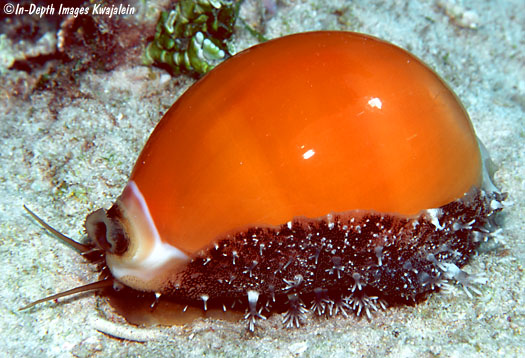
The mantle of the golden is a combination
of dark gray with translucent spots and patches that the orange color of the
shell shows through. The scattered branching papillae are brownish gray, often
white at the bases and tips.
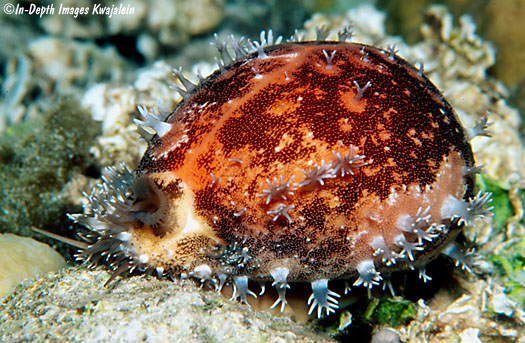
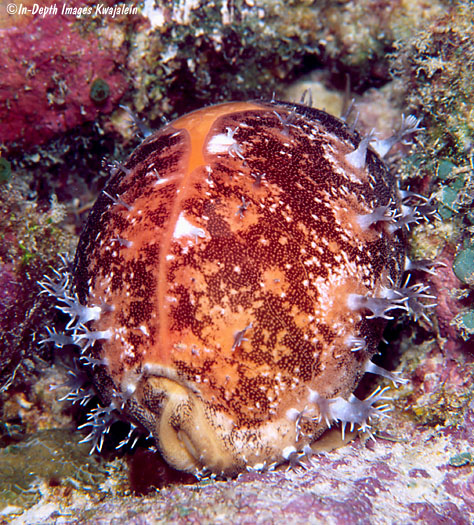
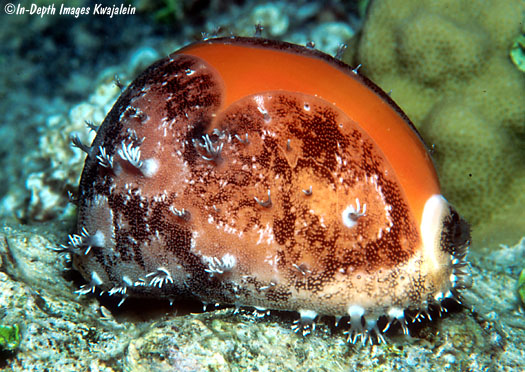
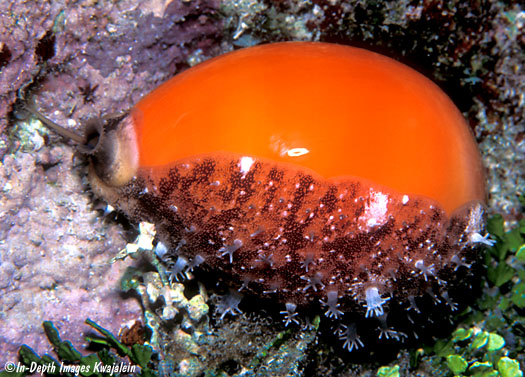
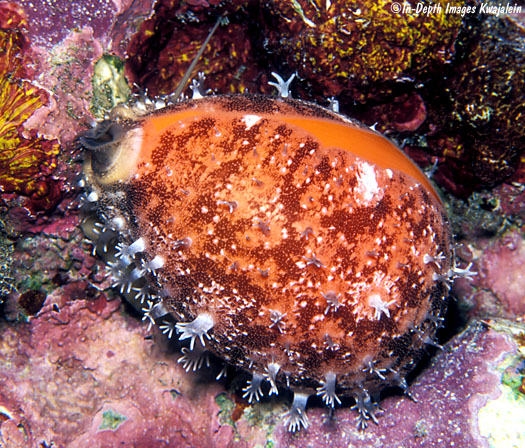
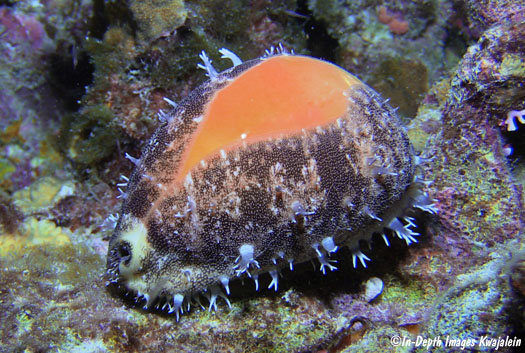
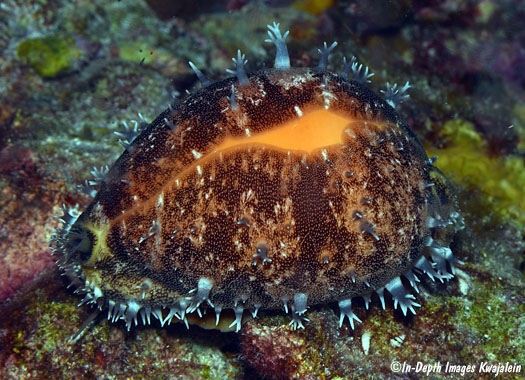
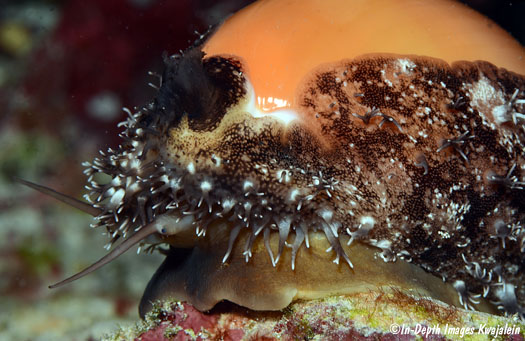
Coming out of hiding shortly after
dark.
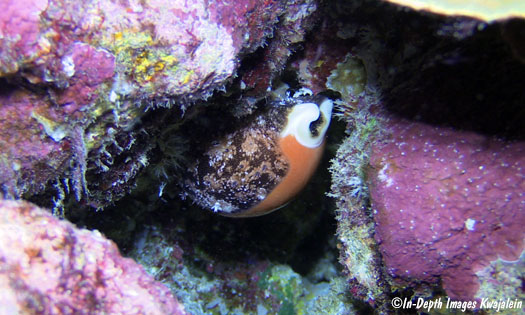
At night they crawl around in ledges
and caves, usually with the mantle fully extended. If they keep the mantle fully
extended, they blend in quite well. However, they are light sensitive and will
often retract the mantle if a diver's flashlight comes close. Then the bright
orange shell is easy to see.
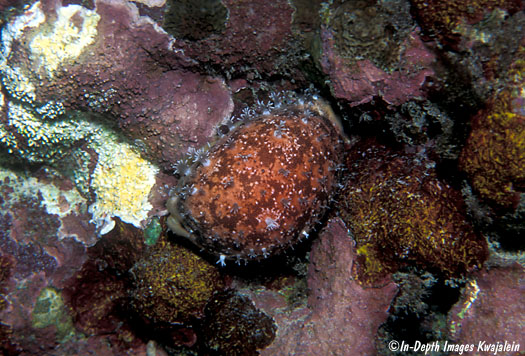
This closeup shows the mantle coloration
and structure of the papillae.
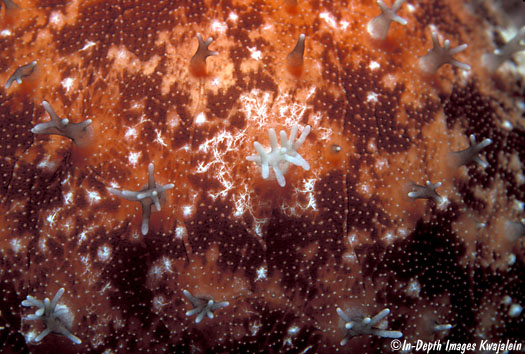
At night when they move around,
they might run into other animals, such as this sleeping parrotfish. It is also
a risky time for the shell. We see a fair number of broken up shells, indicating
that some shell-crushing predator found one while it was exposed. We have seen
large stingrays working along the reef at night; perhaps they are the ones who
prey upon hapless cowries.
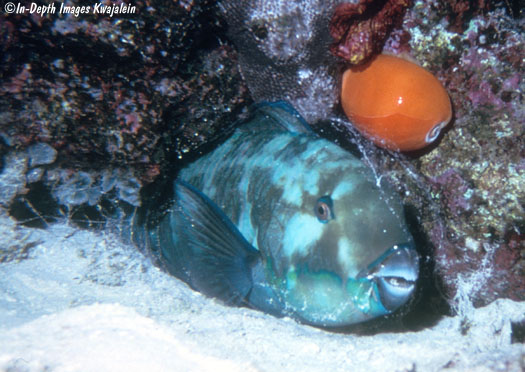
During the day, the shells hide
back in dark holes. The only time you see them in daylight is if one had chosen
the wrong hole to crawl into after a night of wandering about, and could not
get far enough back in to completely hide.
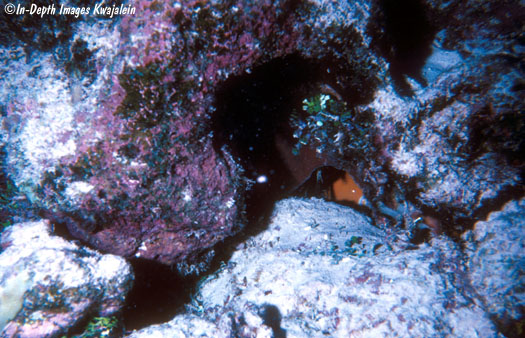
Juvenile Callistocypraea aurantium are rarely encountered. This one
with its shell still in the very thin bulla stage was one of the few living
juveniles we've seen.
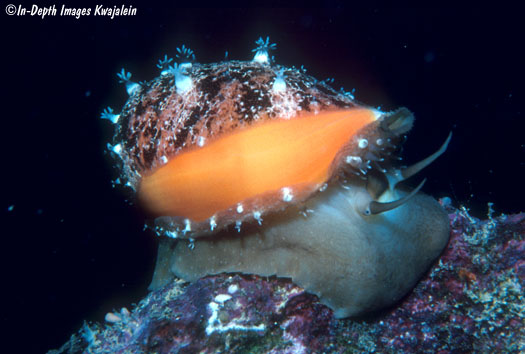
92.9mm, 4 June 1974
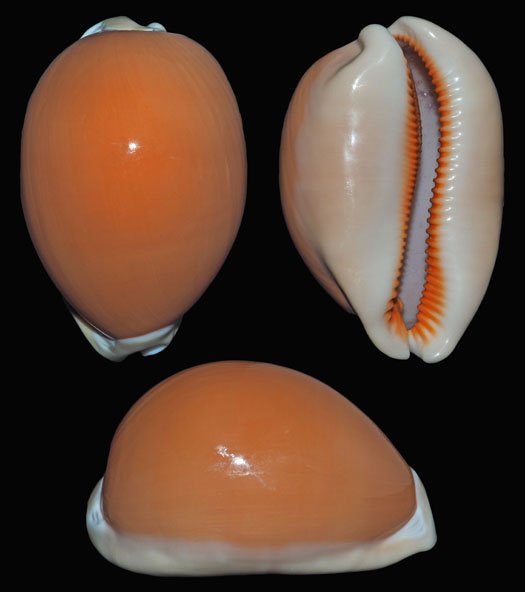
The spire end of the shell showing
the characteristic white "button."
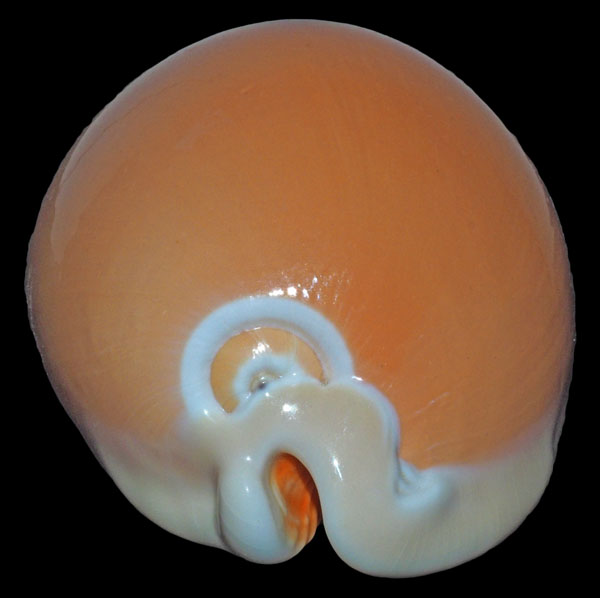
89.9mm, 30 January 2016
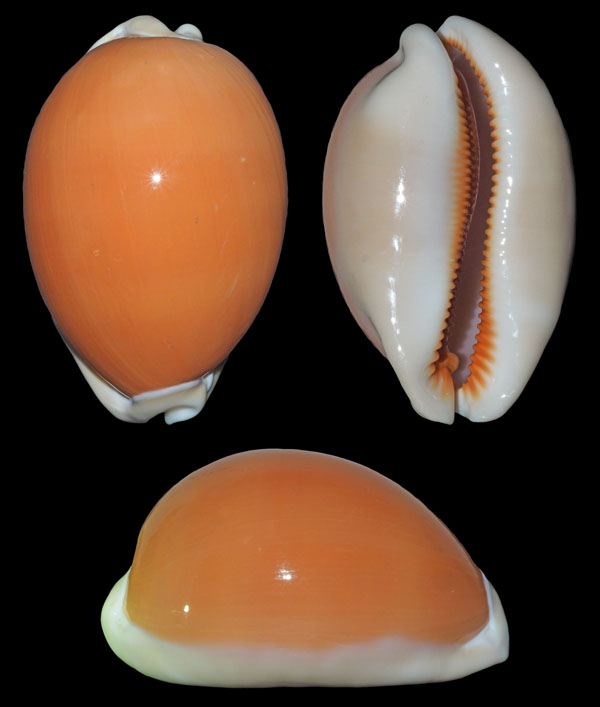
Juvenile 73.3mm shell found empty
in a small cave on the seaward reef.
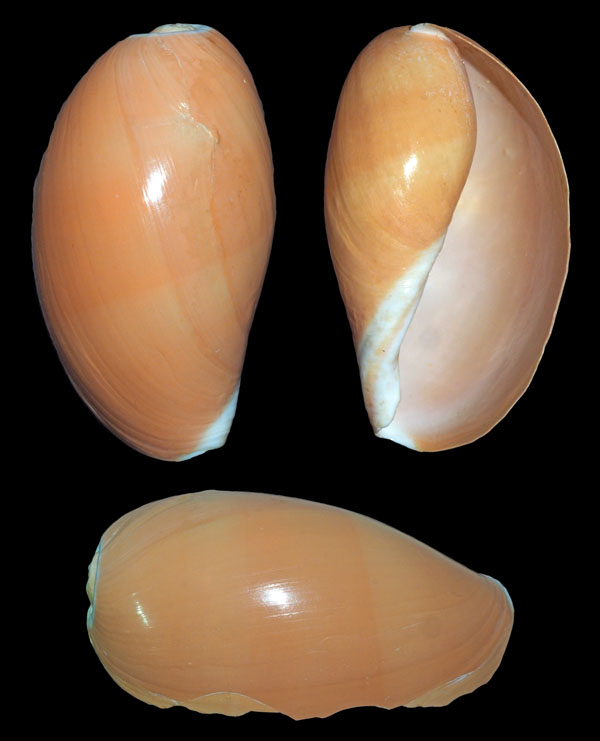
Created
1 April 2008
Updated 2 April 2024
Back to
cowries
Kwajalein Underwater Home



















